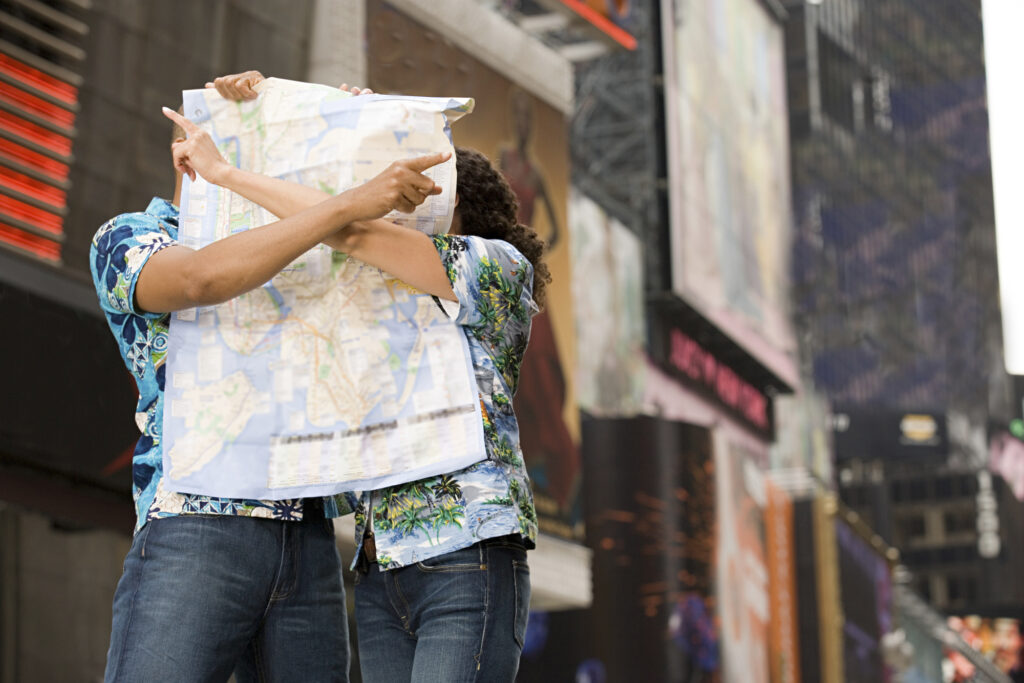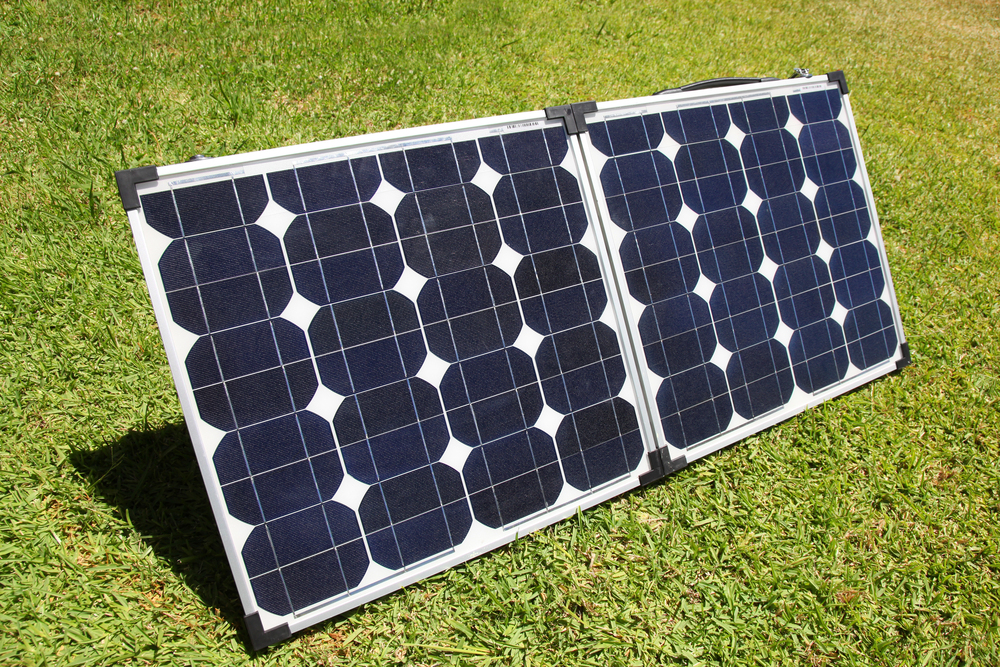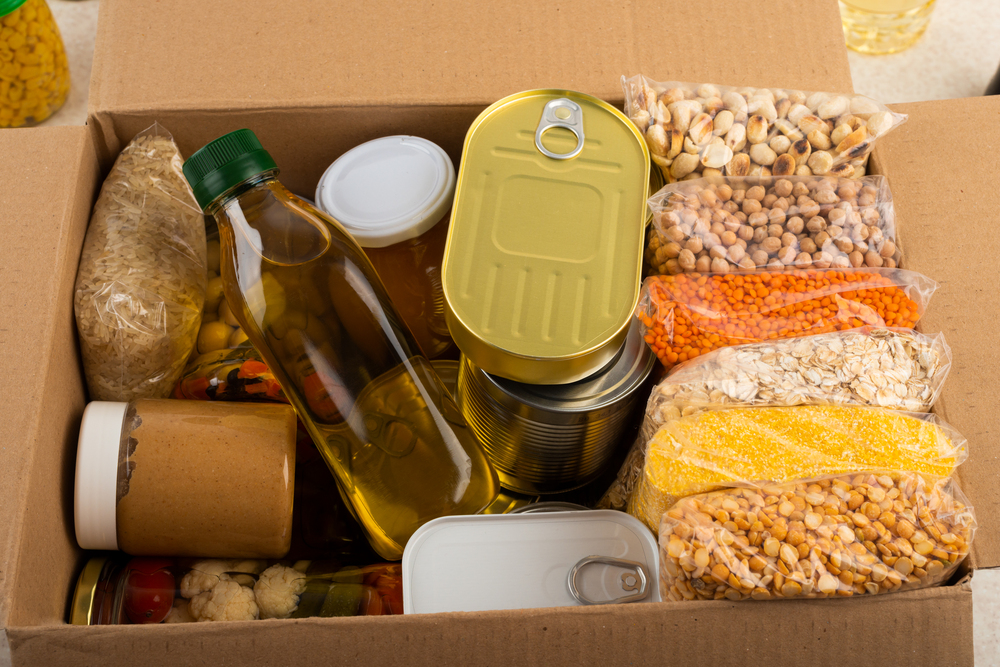Bugging out is an absolute last resort. You will always be safer and more comfortable at home, and your supplies are there, and if there’s a widespread emergency and a breakdown of law and order, travel will become unsafe.
However, to be truly ready for all possibilities, while you are doing your bugging-in preparations, you should also prepare for the possibility of having to bug out.
There are circumstances – if a forest fire is approaching, if you are at risk of flood or other severe weather, if your home is destroyed, if your neighborhood or region is completely over-run – where you and your family might have no choice but to bug out.
Bugging out in prepper/survivalist terms means leaving your home in an emergency situation, for a long time, possibly forever.
Building bug-out bags for yourself and your kids is a first step. Yep, you need a bug-out bag for kids! Then, getting physically fit enough to carry those bug-out bags for a minimum of a few miles is the next step, because all those supplies are useless to you if you can’t carry them more than a quarter mile without collapsing. Remember that the recommended weight for a backpack and its contents is 10 percent of your body weight.
Next step, and vital to your survival, is knowing – where are you going?
Depending on the weather, and if you have well-stocked bug-out bags with a lot of food and you have access to a safe water source, you might be able to survive in the woods for a couple of weeks. However very, very few people these days – myself and most preppers that I know, included – are capable of surviving on their own (or with a few other inexperienced people) out in the woods, for months, hunting for food, skinning and gutting and butchering the animals, finding and disinfecting water, and building a safe shelter, and then staying warm.
Your long-term survival, in a TEOTWAWKI situation, will depend on establishing a bug-out location. You’re not Grizzly Adams, and neither am I. You and your family need a fall-back plan.
Where to go in a bug-out situation?

Every family’s situation and location will be different, so there’s no one-sized fits all answer, and nothing is ideal in a bug-out situation anyway. However, when planning how to bug out, your best case scenario is to have a retreat location.
1.) A remote home or log cabin, well stocked with many years worth of non-perishable food, near a safe water source, with a garden and livestock such as chickens, goats, ducks and pigs, would be one ideal scenario to bug out to. Most of us don’t have that. If you can envision yourself living in this type of location, with your family, then now would be the time to start planning. It could be a vacation home, if you can afford it. It doesn’t have to be big and fancy, but it should be stocked will all of the supplies that you will need, and it should be secured from trespassers if you’re not going to spend most of your time there.
Keep in mind, you’d want to purchase one in a location that you and your family would be able to get to relatively easily from where you currently live and spend most of your time, with a minimum of travel, because travel in an SHTF situation is always dangerous. Something within miles of where you live, but in a remote area, would be ideal. Every mile that you have to travel, in a grid-down situation, exposes you to desperate people who want what you have.
2.) If you have trusted friends or family who live in a location that would likely be safer than yours in an SHTF scenario, you can talk to them about the possibility of staying there if you could no longer stay at your own house.
If you’re going to bug out to someone else’s house, you would want to have that agreement with them beforehand, rather than showing up with your hand out, which is sort of the ultimate joke in prepper communities.
As in, people who have made the mistake of letting everyone around them know that they prep and have lots of food and ammo, will get hit up by people saying “Oh, I don’t need to prep, if things fall apart I’ll just come to your house.”
HA HA HA HA…nope. Not my house. I don’t advertise that I prep, but if people knew and had that attitude and thought they were going to show up on my doorstep to eat the food that we’ve prepped for our family, without contributing a thing…they will be in for a very nasty response. In an TEOTWAWKI situation, it would be an armed response.
It’s not that I don’t want to be helpful. I do. It’s a matter of survival – if there is no access to grocery stores, then my primary responsibility is to make sure that my family is safe, and well-fed.
So, needless to say, don’t be those people – the ones who want to show up with their hands out.. Now is the time to make yourself an asset, not a liability or a resource drain. Learn valuable skills like engine repair, carpentry, hunting, canning and preserving, take advanced first aid courses, even EMT level if you can, and if you are bugging out to a friend’s or family’s location, plan on arriving with as many supplies as you can, and with a good work ethic and a good attitude.
3.) Start networking with like-minded people now. Join your local gun club and once you get to know people, start conversations about what might happen in a SHTF scenario. Ask for ideas. Look on PrepperNet and see if there is a prepper meetup group near you. Join prepper groups on Facebook. Ask people for suggestions on what to do if you can’t stay in your house, in an emergency situation. Be prepared for both helpful answers and sarcastic trolling from insecure people who have nothing to contribute – it is the internet. Don’t take it personally. There are many kind, knowledgeable people in these groups and if you pose your questions respectfully and put a little bit of thought into the questions first, you will get some good suggestions.
4.) Do some research into the American Redoubt. This is a movement of people who are preparing now, by moving to areas in Idaho, Montana, Wyoming, and a few other locations. They are stockpiling and have taught themselves survival/off-grid skills. They are a mostly Christian, conservative group of like-minded individuals who believe that collapse is coming, and who have moved to areas that they believe are ideally situated. You will find that liberals do not like this movement. I do like this movement. In an SHTF scenario, these are the people I would want to be my friends and neighbors. Survivalblog.com has an article about how to find like-minded preppers.
6.) Read this book on Strategic relocation by Jonathon Rawles and James Rawles. Read another book on Strategic Relocation by Joel M. Skousen.
7.) Finally, if disaster strikes and you do not have a secondary location to bug out to, honestly, you may be stuck relying on government resources. That will be not likely be great, and you’d be crowded in with many other refugees, but it’s either that, or living outdoors – and it’s unlikely that you and your family would survive off the land long-term – or finding an empty house if the situation is so bad that there have been mass evacuations and there is no law and order.
Bugging Out Safety Tips
1.)Learn How To Navigate Without A GPS
Do it now, before GPS’s stop working, and teach your family to do the same. Get to know your local area and the routes that you travel regularly. Always have a compass and maps with you, as part of your EDC (every day carry) and keep a road atlas in your car and in your bugout bag.
Learn how to recognize landmarks such as houses and businesses and mountains and any other object which will help you orient yourself. Teach your family how to do this too. If you have to bug out, you may end up having to spend some time in the woods, where it is very easy to get lost. If you are in the woods, make extra sure to take note of any landmarks such as mountains or very tall trees, or a highway where you can hear highway noises, or a body of water like a river, to help orient yourself. Pay attention to the movement of the sun so you can help determine location. Remember, the sun rises in the east and sets in the west.
Take time to learn about the wooded areas between you and your bugout destination, while it’s still safe to do so. What bodies of water are there? Are there railways, and where do they lead? Where are they in relation to your destination? Which direction do the rivers flow?
Use your senses and pay attention to sights and sounds and smells.
Consider taking a bushcraft or camping or wilderness survival class. Taking bushcraft classes could teach you skills that will save your life in an SHTF scenario.
2.)Establish Your Routes To Your Secondary Location
Your secondary location is the one that you are bugging out to. Learn how to get there without a map and without GPS, in a worst case scenario, and teach your family to do the same so you can all assemble there if you are separated.
If there’s an EMP attack, electronics could be fried, and your car might break down. Plan for that possibility, and decide what you would do if your car broke down at any point on the route. Also, panicked people, fleeing, might clog up the roads.
Again, make sure you have maps and a road atlas. You’ll need a bug-out bag if your car breaks down or stops working, stocked with food, water, ways to sterilize water that you find along the route, and other survival items.
3.) Consider Cacheing
Caching means storing supplies along the route that you will take, in hidden places along your route. You would need to store your food in a food locker so that animals don’t get to it, and you would need to take note of who owns the property and obviously, make sure you don’t forget the location, but don’t make your cache box so obvious and easy to find that other people stumble across it.
I’m not suggesting that you ‘cache’ on publicly owned forest land, either; you do you.

4.) Don’t Draw Attention To Yourself
If you are forced to bug out, you and your family need to learn and embrace the ‘gray man’ concept. The ‘gray man’ is a term for someone who blends into a crowd and doesn’t draw any attention to themselves. Just as you don’t want to be known as ‘the family whose house has all the food and survival gear’, if you’re traveling in a nationwide emergency, you don’t want to look like ‘the family who is lugging lots of food’.
You also don’t want to stand out. Don’t be the people in the picture with the bright Hawaiian shirts.
Learn the Gray Man Theory – which means, blending in as much as possible. Don’t look like a tourist, don’t look lost, just stick together and walk purposefully, avoiding eye contact. Don’t wear expensive jewelry, and make sure that any bags you’re carrying don’t look shiny and new. If your Bug Out Bags are new, rub them in dirt and walk on them (when they’re empty).
For increased safety, in a situation where law and order has broken down, you wouldn’t want to make it obvious that you have women in the group. Hooded sweatshirts, or hats, with long hair concealed or cut short, no makeup, and baggy clothing can be effective camouflage.
3.) Conceal Some of Your Supplies
Wearing pants with hidden pockets, and strap-on pouches under your clothing, where you can stash food and emergency items like a compass, a folded up map, water purification tables, could be a life-saver if your group is robbed of your backpacks at gunpoint. You would still have some supplies to save you from starving or going thirsty, and to help you navigate.
It might even be safer not to carry backpacks/bug-out-bags, depending on the situation. Unfortunately, in a mob of desperate, hungry people, or just lawless thugs, backpacks and any bag that you carry makes a very tempting target, because it will be obvious that if you’re going to the trouble of lugging a bag with you, it’s going to have vital supplies.
4.) Have several contingency plans
Teach your children where to go if SHTF while they are at school, if they are away on a trip, if they get separated from you. Don’t just tell them once; go over this on a regular basis. Give them alternative options, like the house of a trusted friend, trusted neighbor, or family member, if they can’t get ahold of you and if they can’t get to your secondary location, because in a disaster scenario, things never go as planned.
5.) Have more than one method of communication
In any ‘how to bug out’ plan, you’ve got to consider how you will contact your family and other loved ones. In a grid-down situation, cell phones will almost certainly fail. In my rural area, when we lose power we lose cell phone coverage. Even if there is power, cell phone carriers get overwhelmed in a disaster situation when everyone is trying to make calls. You’d think the government and cell phone carriers would have addressed this situation by now, but they haven’t.
Some options:
- Walkie-talkies – .6 to 1.2 mile range
- Satellite phones – They do require batteries, but do not depend on the power grid. Often used in emergency situations. They are expensive and come with a monthly bill.
- CB Radio – Up to a 7 mile range. Does not require an FCC license.
- Ham Radio – Average signal range of 25 to 300 miles. Requires an FCC license. Without it, you could be hit by big fines. In a TEOTWAWKI scenario, with no government, law and order, I personally wouldn’t consider that an issue any more, but as long as our government exists, you’d want to have that license.
- Fire and smoke signals, in an emergency, if everyone in your family is trained in how to use them, and how to watch out for them, at a specific time of day, and how to interpret the smoke signals.
- A whistle, very short-range of course. Could be useful either in the woods, or if separated in a crowd.






